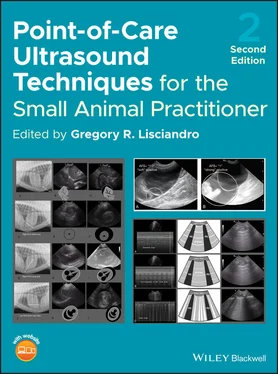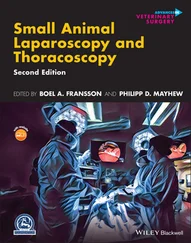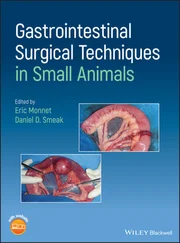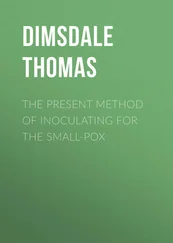Now, 15 years later, the ultrasound probe is not only used by emergency veterinarians but also other nonradiologist, noncardiologist specialists as well as general practitioners. The use of ultrasound as a first‐line, daily imaging modality has become commonplace globally throughout veterinary medicine, improving patient care and saving lives often by capturing disease otherwise missed with traditional work‐ups without ultrasound and detecting complications earlier in their course. Although there may not be the published evidence, I know how much I missed on a daily basis having practiced the first 13 years of my 28‐year career as a general practitioner and then followed by the first three years in emergency and critical care without ultrasound. Many cases from the pre‐FAST era still haunt me and how I failed my patient and their families by missing conditions easily recognized with the Global FAST approach.
The objectives for POCUS and FAST examinations are to rapidly answer important clinical questions to help rule in and rule out conditions, to see your “problem” list for a more streamlined diagnostic plan; to better decide on medical versus surgical and other interventional cases; and to keep the patient alive for gold standard testing and treatment, with a better chance of survival. “Seeing” your problem list as part of your physical exam provides more evidence‐based information over traditional work‐up paradigm(s). Every clinical specialist, including the internist, oncologist, cardiologist, criticalist, neurologist, surgeon, anesthesiologist, ophthalmologist, dentist, and dermatologist, and the ER veterinarian and general practitioner should make learning the basics of POCUS and FAST ultrasound a core skill and first‐line evaluation (extension of the physical exam) for most if not every patient. The new mantra should be “Physical examination and Global FAST!” as the starting point for every patient, providing an unbiased set of data imaging points in both cavities, the abdomen and thorax, for every veterinarian seeing clinical cases.
In my internship year at the Animal Medical Center in New York City in 1991–1992, our Intern Director, the late Dr Michael Garvey, always emphasized that we should “never send a patient out the door with something you could have easily detected by performing a good physical exam and your quick assessment tests.” The day has come when the Global FAST approach should be part of your quick assessment tests. In other words, Global FAST is “an extension of your physical exam,” a term coined by Rozycki and colleagues over 20 years ago. Importantly, POCUS then follows the Global FAST approach for more targeted evaluations as subsequently explained.
With POCUS examinations now being used in human and veterinary medicine on a daily basis, standardization with clear objectives is imperative not only establishing for validity and a healthy respect among our colleagues but for perfecting your skills. Recording data on goal‐directed templates that demonstrate an organized, well‐defined imaging protocol for answering clinically relevant questions is also key for veterinary medicine as a whole to embrace this movement. These questions must be realistically achievable, often binary, for the nonradiologist, noncardiologist sonographer. In this second edition, we have tried to make POCUS and FAST ultrasound examinations as clear as possible.
However, even with this approach, we think that caution should be exercised in how individual POCUS examinations are applied to patients. For example, a POCUS gallbladder examination may prove unremarkable, but if the Global FAST approach is applied to every patient as part of the initial evaluation process, the pericardial effusion, poor systolic function (dilated cardiomyopathy), low‐grade peritonitis or small‐volume hemoabdomen would not have been missed or delayed in its detection. In other words, the Global FAST approach should be considered your baseline imaging test with POCUS examinations considered as adjuncts. This imaging strategy prevents “satisfaction of search error” to which POCUS examinations by themselves are prone. Global FAST prevents the picking and choosing of whichever POCUS examination helps fulfill your preconceived clinical bias by providing a mandated, standardized set of imaging data points of the abdomen and thorax.
In another example, the POCUS heart provides an overview for cardiac information but is too focused, missing lung abnormalities and comorbidities within the patient's abdominal cavity. Through a Global FAST approach plus the add‐on of a POCUS heart, the enlarged caudal vena cava suggesting right‐sided heart congestive failure is detected, or the splenic mass or small‐volume ascites is not missed, that was not even considered by the clinician but found as an unexpected comorbidity. Lastly, an unremarkable POCUS heart exam on a coughing dog, without an integrated approach with Global FAST, misses the widespread small lung nodules or the aspiration pneumonia that are inapparent on thoracic radiography. The “POCUS only” analogy would be similar to a selective physical examination, in which only the abdomen is palpated in a vomiting cat, or only the heart and lung ausculted in a coughing dog, or only the limb evaluated in a limping older dog. Most of us are aware of missing major problems when doing incomplete physical exams.
You may have or soon will have the epiphany of how powerful a tool first‐line ultrasound is. The same epiphany has occurred in human medicine with similar stories of how first‐line medical personnel are capturing aortic dissections in patients who have recovered and compensated, ectopic pregnancies with internal intermittent bleeding, and pulmonary thromboembolism as life‐saving examples that historically would have been delayed or completely missed (possibly resulting in death). Capturing these traditionally problematic life‐threatening conditions is now possible on initial evaluation within minutes of presentation by “seeing” the problem.
In this second edition, we provide additional knowledge on what we have learned since the first edition, with more chapters and additional topics. These include additional chapters on eye and musculoskeletal exams as well as ultrasound‐guided procedures, including the thoracic procedures and nerve blocks. Moreover, we devote an entire chapter to cats. We continue to push the envelope with the addition of more species including exotic companion mammals, marine mammals, birds, and reptiles. Personally, after performing thousands more exams, publishing numerous clinical studies, and through training over 1000 veterinarians in these techniques, we also share what we have learned using the Global FAST approach. We also welcome not only our previous chapter authors, who have also learned much since the first edition, but also a new set of thought‐leading authors sharing their expertise in their respective chapters.
And, finally, as I prepared this second edition, reading through lists and lists of references, it became even more apparent that this paradigm change would not be possible without the many sonographers, veterinarians, residents, radiologists, and cardiologists who have painstakingly worked through untold hours of scientific research and clinical studies that have laid the foundation, for where veterinary diagnostic ultrasound is today. We extend a big thank you!
So let's get on with it. We welcome feedback by email at FASTSavesLives@gmail.com and via our Facebook page, www.facebook.com/FASTVet, or our website www.FASTVet.com. Your stories and experiences as general practitioners, emergency and critical care veterinarians, and clinical specialists are awaited. Your stories and experiences help keep the POCUS and FAST train moving forward, helping with advancements in training, perfecting imaging techniques, and their clinical applications.
Читать дальше












